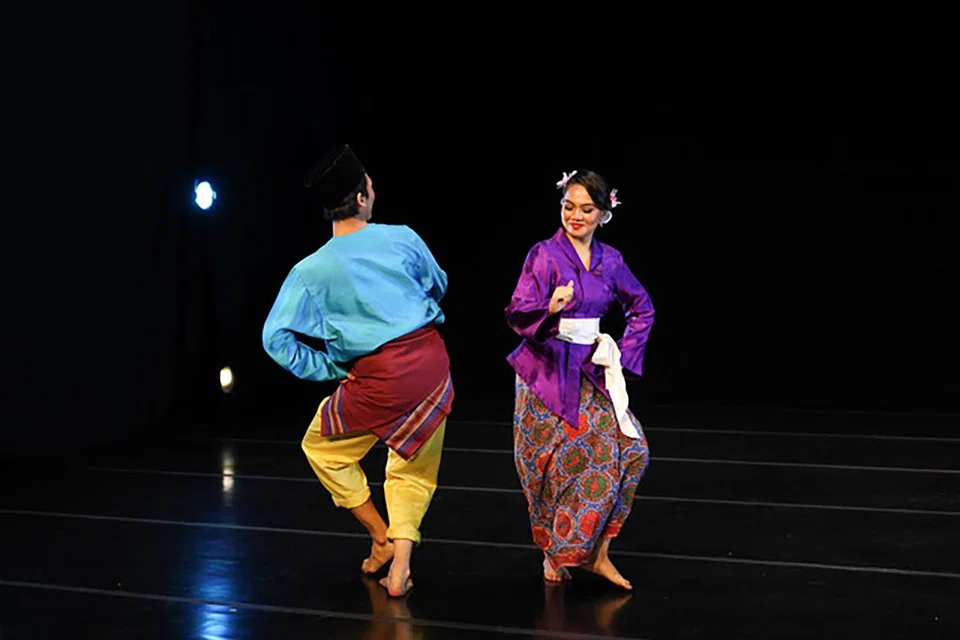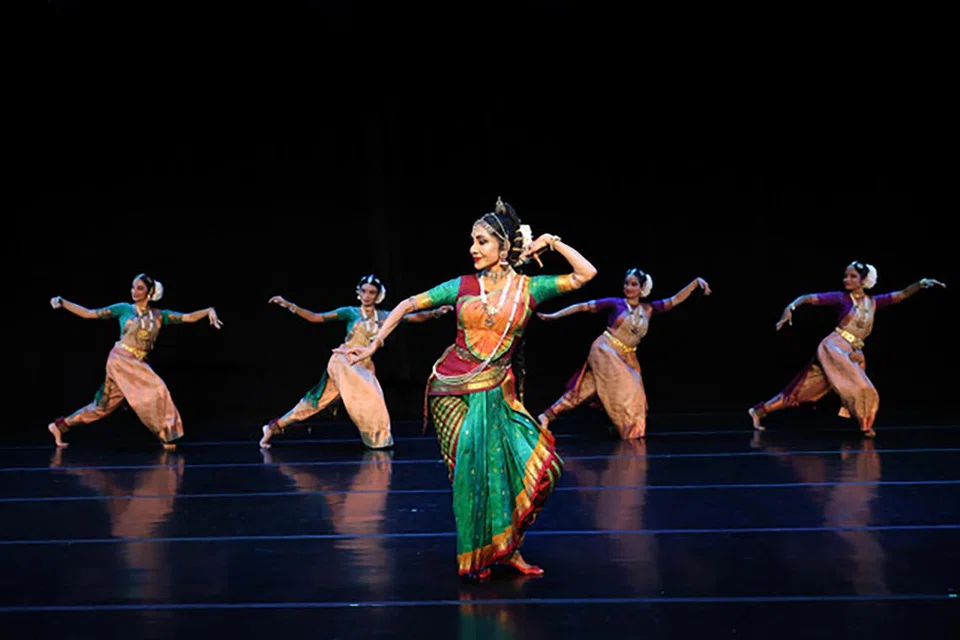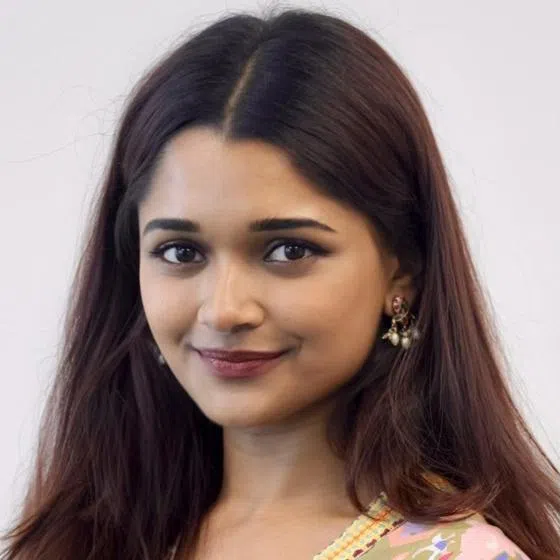The Goodman Arts Centre was transformed into a living canvas last weekend for a dance performance that paid tribute to the rich cultural legacies of Singapore and India.
Kallang to Kaveri was brought to life, alongside a remarkable ensemble of performers.
Through graceful choreography and powerful stagecraft, she sought to draw a symbolic connection between Singapore’s Kallang River and India’s sacred rivers – the Brahmaputra, Narmada, Ganga, and Yamuna.
“I have lived by rivers all my life. From my birth near the Straits of Johor, onto the Bay of Bengal and across to the Arabian Sea. And then to the Hudson River and the Thames in London. And now I have come back home, to the Kallang River,” Ms Ratii shared with the audience.
Ms Shantha was born in Singapore near the Straits of Johor. Her passion for movement ignited at a young age, starting with Bharatanatyam. At 14, she expanded her artistic horizons by taking up Kathakali, a male-dominated dance form, undeterred by gender norms. To deepen her craft, she moved to India and underwent a gurukulam (a traditional Indian education system where students, known as shishya, live and learn with a teacher, or guru) in Chennai, where she trained rigorously under the guidance of classical dance masters.
Ms Shantha’s path then took her across continents. She moved to New York to work as a producer for a cultural programme, where she helped bring South Asian arts to international audiences, after which she moved to London with her husband.
For this showcase, India’s rivers were spotlighted. Each group and solo act in the showcase symbolised each river, with movements that captured their unique energy and spirit.
Under a soft blue hue that bathed the stage, dancers clad in traditional Indian and Malay costumes pranced to Carnatic music. The pleats of traditional Bharatanatyam costumes flared open like lotus petals in bloom, while the straight lines of kebayas and baju melayus added to the visual feast.
Organised by the Shantha Ratii Initiative (SRI) in honour of International Dance Day and in celebration of Singapore’s 60th anniversary, the show featured students from Shruthilaya Dance academy as well as Era Dance Theatre, a platform dedicated to nurturing young Malay performing arts talent.
It opened with an introduction of all the dancers – both Indian and Malay dancing together – which was then followed by a presentation of traditional Malay dance by the dancers of Era Dance Theatre.
Between performances, Ms Ratii addressed the audience, offering insight into the inspiration behind each piece. She spoke passionately about the symbolism of water as a life-giving force. “Rivers have always been a source of comfort, peace and inspiration for me,” she said.
Amidst the intensity of the choreography, the dancers moved with such passion and precision that a few earrings came loose. Yet, with remarkable focus and grace, they danced around the fallen jewellery without missing a beat – masterfully avoiding the sharp glint of metal as though it were part of the choreography itself.
Ms Ratii’s vision was clear – to evoke the spirit of India’s great rivers, whose banks have cradled civilisations for millennia, interwoven with stories of Hindu deities told through classical Indian dance. Her movements on stage were amplified by the striking costume changes that mirrored the arc of the performance. She began in a white, swan-like ensemble, flowy and ethereal, with delicate chiffon detailing that caught the light as she glided across the stage like a river in motion.
Later, she re-appeared in a regal green and deep red costume, adorned with layers of heavy gold jewellery.
The final performance of the evening, symbolising the river Yamuna, featured Ms Ratii dancing alongside students from her mentorship programme, which is an initiative she created to nurture the next generation of dancers.
“The programme picks promising young dancers and guides them through their dance journey,” she explained, adding that this endeavour is particularly close to her heart. “Artists and their cultural expression manifest the spirit of a nation,” she added.



